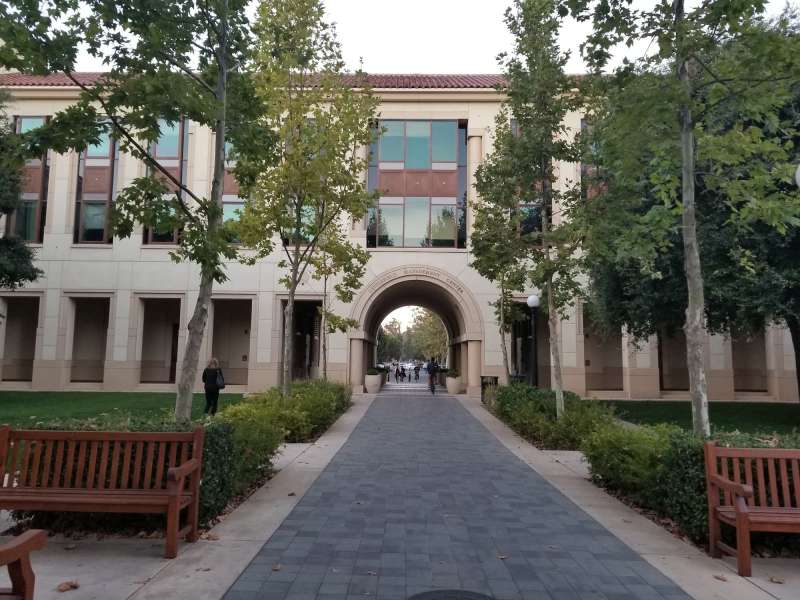On Tuesday afternoon, Board of Trustees Chair Jeff Raikes ’80 reflected on the Board’s first meeting of the year. Raikes recapped University President Marc Tessier-Lavigne’s annual report to the Board and touched on topics ranging from free speech on campus to the Long-Range Planning process and the University’s investment responsibility.
Raikes, reporting on Tessier-Lavigne’s annual report, discussed how Stanford can and should approach questions of free speech on campus, such as those that came up in response to the launch of the Cardinal Conversations lecture series last year.
The Conversations series — an attempt, co-hosted by the Freeman Spogli Institute (FSI) and the Hoover Institution, to encourage the free exchange of ideas through intellectual discourse — attracted controversy in its inaugural year for both its guest speakers and its leadership. This September, Provost Persis Drell addressed that criticism, stating that the program will now “reexamine [its] format and structure and aim to present a more diverse group of speakers and topics” in addition to assembling new faculty leadership.
Raikes cited Drell’s response as an example of the University’s commitment to free speech.
“We want the University to model the kind of discourse that brings together diverse points of view and also has the dialogue with respect,” he said.
Raikes also spoke on Tessier-Lavigne’s goals for the future, especially in the context of the Long-Range Planning initiative under which, in early February, the University released 37 white papers summarizing thousands of crowdsourced ideas and suggestions on topics such as research, diversity, sustainability and community engagement.
“[Tessier-Lavigne’s goals] really came down to three important points: powering the agile research university, accelerating solutions to society and shaping a twenty-first century learning environment,” Raikes said.
According to Raikes, those goals will now provide a framework for the Trustees to work off of when approaching Long-Range Planning.
Raikes added that taking Long-Range Planning from a vision to a concrete plan will be a priority for the University this year.
Raikes also spoke on the University’s investment responsibilities in the wake of last year’s Associated Students of Stanford University (ASSU) spring ballot, which saw a majority of undergraduate and graduate students vote in favor of University divestment from fossil fuels.
When asked if the Board plans to consider those results, Raikes highlighted the student outreach involved in the ongoing review of the Board’s Statement of Responsibility, which was initially written in the early 1970s.
The Advisory Panel on Investment Responsibility and Licensing (APIRL) “reached out to ASSU leadership … and student groups that had put forth divestment proposals — for example, Fossil Free [Stanford] — to get feedback on the statement and the process,” Raikes said.
APIRL, along with a community panel of Stanford students, faculty, staff and alumni, is the body tasked with making a recommendation on the review process, although it is the Board that will make the final decision.
The Board intends for the review process — which was initiated a year ago — to be complete later in the fall quarter.
“We — the Board — felt that it was important to get broad input from the community,” Raikes said. “When it comes to investment responsibility in today’s world, it’s a very complex set of issues, and how we approach them requires deep and thorough consideration.”
Previously, the Board responded to an investment review request submitted by members of SU Prison Divest, an activist group calling for Stanford to cut off all indirect investment in private prisons. In a letter to the group, the Board acknowledged the importance of the issue but chose not to take action.
Raikes also discussed the ResX Task Force, which was convened by Provost Drell last spring as part of the Long-Range Planning process to improve undergraduate residential experience.
“The residential nature of the undergraduate experience at Stanford is one of the most distinguishing features of the University,” Raikes said, “and thinking about how that should evolve in the years to come is a very important part of the long-range plan.”
He added that Vice Provost for Student Affairs Susie Brubaker-Cole and Vice Provost for Undergraduate Education Harry Elam have been examining different models of residential structures at peer institutions across the country, with a particular eye on what would be the ideal residential setup for Stanford freshman.
Raikes highlighted all-frosh dorms and four-class residences, the residential staffing structure and the housing assignment process as areas for improvement.
In addition to addressing these issues, Raikes also said the Board of Trustees has given concept and site approval for three new district work centers on campus for The Land, Buildings and Real Estate (LBRE) department, which manages construction and maintenance of Stanford’s campus.
Raikes also drew attention to the new Anne T. and Robert M. Bass Biology Building, named after Bob Bass, who created the Bass Childhood Cancer Center at the Lucile Packard Children’s Hospital among other contributions to education and medicine.
Contact Elena Shao at eshao98 ‘at’ stanford.edu.
